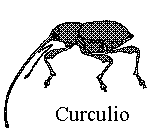Michael Hendry
29 October, 2000

|
Michael Hendry 29 October, 2000 |
 |
If there were only one critical edition of Juvenal available, I would be forced either to drastically simplify the one available apparatus (as I have done in my web-text of Claudian) or risk charges of plagiarism by not simplifying it. If there were only two editions, I would be faced with the task of deciding whom to trust in places where they disagreed, as different editions so often do. Fortunately, Juvenal has been blessed with an abundance of critical texts in this century, so I can give fairly full reports with some confidence in their accuracy, despite never having examined (or even laid eyes on) any of the manuscripts myself.
In forming my text, I have relied on the following editions:
| Housman | 1931 | A. E. Housman, D. Iunii Iuuenalis Saturae 'editorum in usum', Cambridge, 19051, 19312. |
| Knoche | 1950 | U. Knoche, D. Iunius Iuvenalis. Satirae, München. |
| Courtney | 1984 | E. Courtney, Juvenal, The Satires, a text with brief critical notes (Instrumentum Litterarum 1), Rome. |
| Martyn | 1987 | J. R. C. Martyn, D. Iuni Iuvenalis saturae, Amsterdam. |
| Clausen | 1992 | W. V. Clausen, A. Persi Flacci et D. Iuni Iuuenalis Saturae (Oxford Classical Text), Oxford, 19591, 19922. |
| Willis | 1997 | J. A. Willis, Iuuenalis Saturae (Teubner), Stuttgart and Leipzig. |
Juvenal does not suffer from the cacoethes renumerandi that afflicts some other authors: twentieth-century editors use nearly the same abbreviations for the primary manuscripts. The best of the bunch, P, stands nearly alone and is the only one that contains the scholia. It and its close relatives are:
| P | Montpelier | Pithoeanus |
| R | Paris | Parisinus 8072 |
| V | Vienna | Vindobonensis 107 |
These three manuscripts are reported separately. The lemmata to the scholia in P sometimes offer a different text, and are known as S: readings are only reported if they differ from those of P.
There are hundreds of non-P manuscripts, which are usually known collectively by a capital Greek letter Phi, which is not one of the two Greek letters most web browsers can handle, ß and µ. (The former is actually a German letter or combination of letters, but will do for Greek beta.) Beta (ß) seems an appropriate letter for the general run of Phi-class manuscripts, since they are in general inferior to the 'alpha' manuscripts, P and its congeners. Those that have been most often selected from this mass for reporting are, in alphabetical order:
| A | Munich | Monacensis 408 |
| C | St. Gall | Florilegium Sangallense |
| F | Paris | Parisinus 8071 |
| G | Paris | Parisinus 7900A |
| H | Paris | Parisinus 9345 |
| K | Florence | Laurentianus 34.42 |
| L | Leiden | Leidensis b. p. 82 |
| O | Oxford | Oxoniensis |
| T | Cambridge | Cantab. Trin. O IV 10 |
| U | Vatican City | Vatic. Urbinas 661 |
| Z | London | Lond. BM add. 15600 |
The only major difference among the editions I have used is that Housman does not report H, K, R, or Z, and refers to V as Vind., while everyone except Knoche and Martyn calls the Florilegium Sangallense Sang. instead of C. In my apparatus, the symbol ß means either all of the Phi-manuscripts or all of them not listed separately.
Sometimes a late manuscript offers a reading that is almost certainly the result of anonymous conjecture. In printed editions, these are sometimes attributed to the 'Itali', more often referred to with 'recc.' for recentiores, or a stigma, a symbol like a stretched-out end-of-word sigma. I have used µ, since it is available and may stand for any one of the myriads of late manuscripts. (I was tempted to use þ and ð, but thought it best to stick to traditional Greek letters: Anglo-Saxon letters might have inspired Anglo-Saxon epithets from some readers.)
Other symbols used are a plus sign in the apparatus for the indirect tradition (Priscian, Servius, and others), and a vertical red slash in the text to mark hiatus. The latter will help the reader who wishes to read the text metrically, as everyone should: for examples, see (e.g.) 11.151, 13.65, 15.126.
In deciding what to print in my text and what variants to report, I have followed the following principles:
1. Liberal admission of conjectures and ill-attested variants. This is a conservative age textually, if in no other respect, too easily satisfied with whatever the previous generation of editors has supplied. I have tried to err on the side of boldness, so as to force even unwilling readers to think about the text.
2. Omission of variants and conjectures where the text is well-established. What counts as superfluous is not an easy thing to decide in many cases, but I have aimed at a level of annotation more appropriate to a Loeb or a Cambridge 'green and gold' than an Oxford Classical Text or Teubner.
3. Usefulness for the general reader. I find it hard to work up an interest in purely orthographic variants. It would be impertinent to call this an edition of Juvenal 'lectorum in usum', but that is the general idea.
§